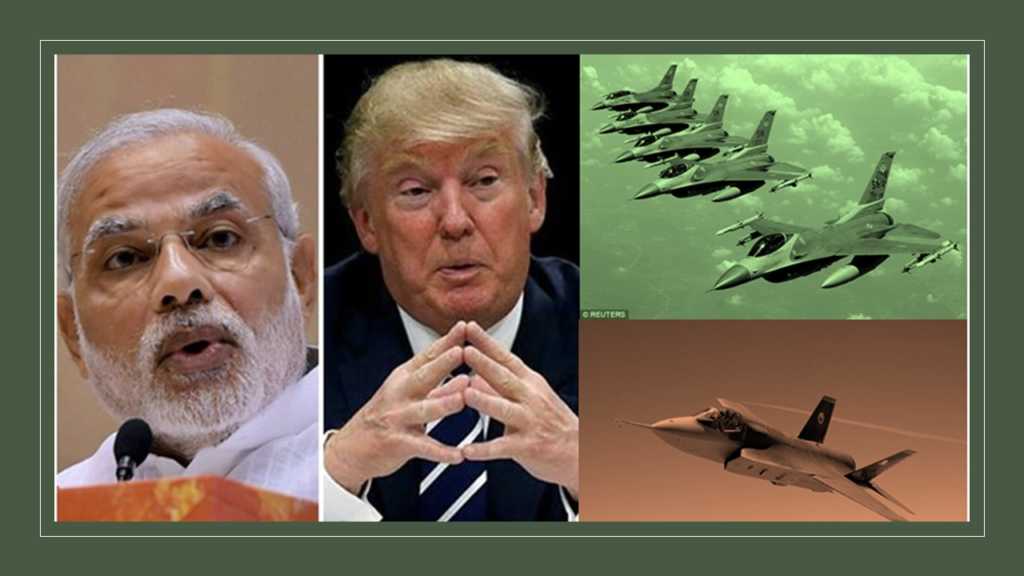Owing to the China’s growing influence in South Asia, Senators Mark Warner from Virginia and John Cornyn from Texas in a joint letter to US Defense Secretary James Mattis have urged the Trump administration to push for the sale of F-16 fighter jets to India. The statement from US senators came at the time when Indian Air Force is struggling to replete its arsenal. Last year in December retired Air Chief Marshall Arup Raha said that the IAF needs to add around 250 new aircrafts in the medium-weight fighter jet category to maintain its edge over China and Pakistan in case of war. The Indian Ministry of Defense (MoD) has issued global competitive bids for 200 single engine fighter jets to be manufactured under ‘Made in India’ initiative.
Lockheed’s F-16 and Saab’s Gripen are two main contenders in the fight.
F-16
The F-16 Block 70 is the most advanced of all F-16s. These planes have features such as high fighter radar capabilities, greater detection and tracking ranges, multiple target tracking, high resolution synthetic aperture radar, and auto target classification, advanced growth modes. F-16 is equipped with AN/ APG 83 AESA radar. It can perform Air to Air and Air to Ground search simultaneously. The noise reduction feature has improved its range to almost 84 km for engagement. The image quality in air to ground mode is just the same that is acquired from satellites. The images can be acquired from long distances for air to ground targets. Using the synthetic aperture radar mode, pilots can locate and recognize the ground targets and engage them simultaneously.
The new Modular Mission Computers (MMC) allows sensor data fusion from the Electronic warfare (EW) sensors for better situational cognizance. The data transfer network is quite faster than sensor systems used previously. It is also equipped with a sensor which allows pilot to sense and target something that is out of his field of view.
The F-16 also possesses a pilot friendly automatic ground collision avoidance system which continuously tracks pilot’s awareness with respect to decreasing altitude. It makes pilot aware and turns up the aircraft automatically if it goes too close to ground. During a dogfight, while manoeuvring the aircraft to follow an enemy aircraft, the enemy may try to run away by staying low. There may be a chance that F 16 may accidentally hit a mountain or be directed towards the ground while pursuing, it is then this system becomes tactically important.
Pros of selecting F16
- Easy availability of spare parts.
2 Battle proven capability.
3 Pakistan Air force has F 16. If India buys it will give a strategic advantage.
Cons
- High operating costs as compared to Gripen.
- Does not contain advanced sensors as compared to Gripen.
- F 16s have been used in many warfare missions. The more use of these aircrafts have made them more predictable and vulnerable to the enemy.
Saab Gripen
Gripen is a multi-role fighter aircraft that is capable of performing an extensive range of air-to-air, air-to-surface and reconnaissance missions under extreme conditions. The Swedes have always impressed the world with their engineering design. Gripen offers operational dominance and flexibility with superior mission survivability. Air-to-air superiority is maintained with METEOR, AMRAAM, IRIS-T, AIM-9 missiles that can be installed on it. Air-to-surface capability is assured through the use of the latest generation precision weapons and targeting sensors. Gripen’s air superiority is ensured through AESA radar, IRST passive sensor, HMD, cutting-edge avionics, next generation data processing and a state-of-the-art cockpit.
Gripen E has a new electronic architecture (Net Centric Warfare – NCW).The new central system PPLI (Participant Precise Location and Identification) connects all the internal and external sensors (RAVEN, IRST, and EW39, ATFLIR pod) to offer the best responses to threats. The Gripen E is powered by General Electric’s (GE) F414G turbofan engine rated at 22,000lb (98kN). It also possesses a new high-pressure turbine and a new six-stage high-pressure compressor. The Gripen E has a digital cockpit with three large multi-functional displays (MFD) and a hands-on-throttle-and-stick that provides superior situational awareness to the pilot.
Pros of selecting Gripen
- Gripen operating costs almost USD 7800 per hour which is lesser than when compared to F 16 (USD 12000).
- Gripen has the most advanced sensors which makes it the smartest fighter amongst the Fourth Generation Fighter Aircraft.
- Saab which manufactures gripen has offered to assist India manufacture LCA Tejas.
Cons
- Gripen uses General-Electric Engine which is developed by Americans; it may be difficult to manage supply chain in hard times.
- Gripen’s per unit manufacturing cost is higher than that of F-16 block 70.
- The Gripens have not been used much in any war so less can be said about their reliability when tested in real situation.
Although,the senators have urged Trump administration to make the fighter jet acquisition a priority during the bilateral discussions, Indians must keep in mind that the last F-16 for the US Air Force rolled off the production line in 1999.It should not be the case that the ageing Russian squadrons (MIGs) of Indian Air Force are replaced by ageing American fleet in haste. All the factors must be taken into consideration and objective approach must be kept while choosing between F-16 and Gripen.
